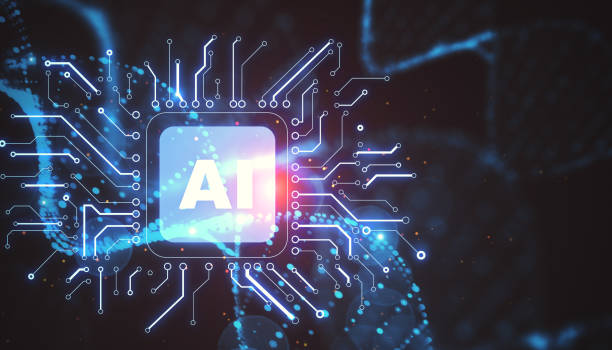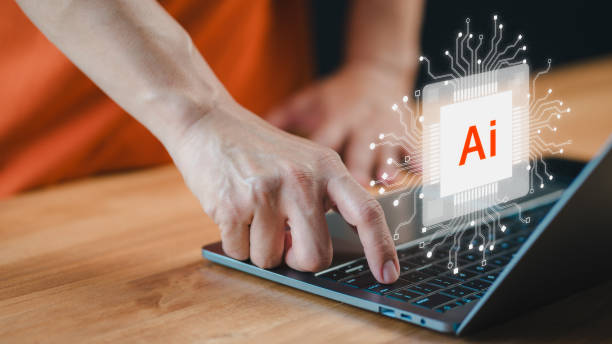What is an AI Robot? Definitions and Basic Concepts
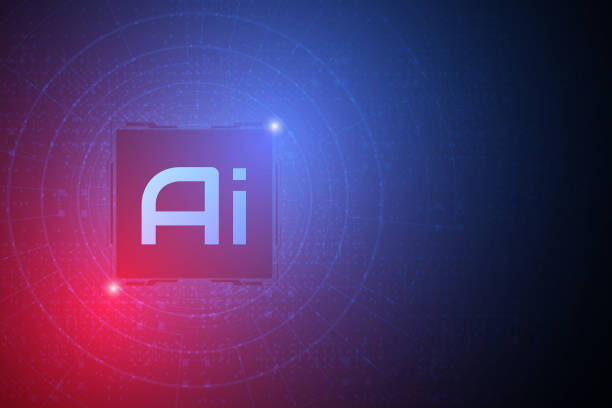
#Artificial Intelligence Robot (AI Robot) is a combination of two distinct but related fields: robotics and artificial intelligence.
Robotics deals with the design, construction, operation, and application of robots.
Robots are machines that can be programmed to perform various tasks, typically tasks that are dangerous, repetitive, or difficult for humans.
Artificial Intelligence (AI) is a branch of computer science that focuses on creating intelligent systems; systems that can perform tasks that usually require human intelligence, such as learning, problem-solving, pattern recognition, and decision-making.
Therefore, an AI robot is a robot that, using AI algorithms and techniques, is capable of performing more complex and flexible tasks than traditional robots.
These robots can learn from data, interact with their environment, and make decisions based on received information.
For example, an AI robot can work in a factory and remove defective products from the production line, or it can act as a personal assistant, helping people with their daily tasks.
AI robots have applications in various industries, including manufacturing, healthcare, customer service, education, and research.
They can help increase productivity, reduce costs, improve quality and safety, and provide better services to customers.
Are you dissatisfied with the low conversion rate of visitors to customers on your e-commerce website?
Solve this problem permanently with professional e-commerce website design by Rasaweb!
✅ Increase visitor-to-customer conversion rate
✅ Create an excellent user experience and build customer trust
⚡ Get free consultation
Key Components of an AI Robot

An AI robot is composed of several key components that work together to enable intelligent task performance.
These components include:
- Sensors Sensors allow the robot to collect information about its surroundings.
This information can include visual data (via cameras), audio data (via microphones), tactile data (via pressure sensors), motion data (via gyroscopes and accelerometers), and other types of data. - Processor The processor is the robot’s brain, processing the information collected by sensors and making decisions based on AI algorithms.
The processor can be an internal computer, an embedded system, or a connection to an external computer. - Actuators Actuators allow the robot to act in its environment.
These actuators can include motors, pumps, valves, grippers, and other mechanisms. - AI Algorithms AI algorithms are the heart of an AI robot.
These algorithms allow the robot to learn from data, recognize patterns, solve problems, and make decisions based on received information.
AI algorithms can include machine learning, neural networks, natural language processing, computer vision, and other techniques. - Power Source The power source provides the necessary energy for the robot.
This power source can include batteries, fuel cells, or a connection to an external power supply.
These components, working together, form a complex system capable of performing various tasks.
AI robots are constantly evolving, and with the emergence of new technologies, their capabilities are also increasing.
Types of AI Robots Based on Application
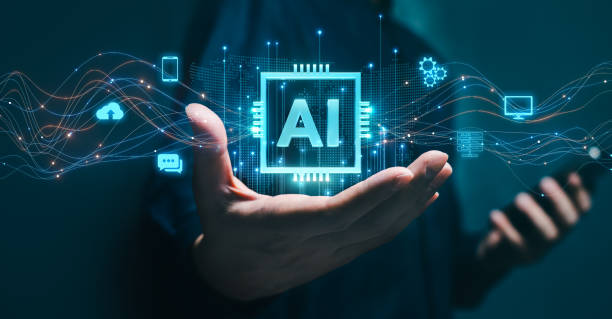
AI robots are categorized into different types based on their applications.
Below, we refer to some of the most important ones:
- Industrial Robots These robots are used in factory production lines for repetitive and precise tasks such as welding, painting, assembly, and packaging.
Industrial robots can become more flexible and perform more complex tasks using AI. - Service Robots These robots are used in various environments such as hospitals, hotels, restaurants, and homes to provide services to humans.
Service robots can perform tasks such as cleaning, food and medicine delivery, caring for the elderly and children, and providing information. - Medical Robots These robots are used in operating rooms, laboratories, and rehabilitation centers to assist doctors and nurses.
Medical robots can perform precise surgeries, dispense medications, collect lab samples, and help patients in the rehabilitation process. - Military Robots These robots are used in battlefields and dangerous areas for tasks such as reconnaissance, bomb disposal, equipment transportation, and border surveillance.
- Space Robots These robots are used in space missions for tasks such as planetary exploration, satellite repairs, and space station construction.
In addition to these classifications, AI robots can also be categorized based on their type of locomotion (such as wheeled robots, legged robots, flying robots) and type of human interaction (such as social robots, collaborative robots).
| Robot Type | Applications |
|---|---|
| Industrial | Welding, Painting, Assembly |
| Service | Cleaning, Food Delivery, Caregiving |
AI Algorithms Used in Robots
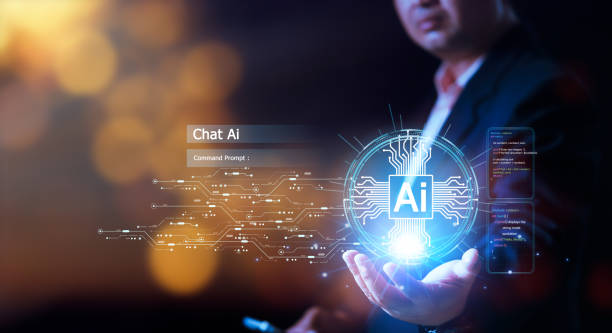
AI algorithms play a vital role in the performance of intelligent robots.
These algorithms help robots learn from data, recognize patterns, solve problems, and make decisions based on received information.
Some of the most important AI algorithms used in robots include:
- Machine Learning Machine learning allows robots to learn from data without explicit programming.
Machine learning algorithms can include supervised learning, unsupervised learning, and reinforcement learning. - Neural Networks Neural networks are computational models inspired by the structure of the human brain.
These networks are used to solve complex problems such as image recognition, natural language processing, and robot control. - Natural Language Processing (NLP) Natural language processing allows robots to understand human language and interact with it.
These algorithms are used to build conversational robots, translate languages, and extract information from text. - Computer Vision Computer vision allows robots to understand images and videos.
These algorithms are used for object recognition, facial recognition, motion tracking, and other visual tasks. - Planning Planning algorithms allow robots to set their goals and create plans to achieve them.
These algorithms are used to control robot movement, manage resources, and solve complex problems.
The selection of the appropriate algorithm depends on the specific application of the robot and the type of tasks it needs to perform.
As AI advances, newer and more efficient algorithms are being developed for use in AI robots.
Did you know that poor online store design can drive away up to 70% of your potential customers? Rasaweb transforms your sales with professional and user-friendly e-commerce website designs.
✅ Significant increase in sales and revenue
✅ Full optimization for search engines and mobile
⚡ [Get free consultation from Rasaweb now]
Challenges in AI Robot Development
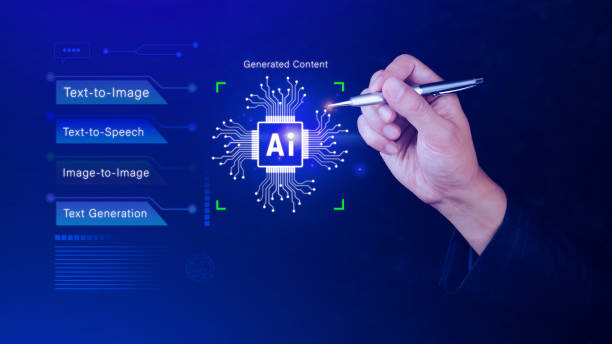
The development of AI robots faces numerous challenges that must be overcome to create advanced and reliable robots.
Some of the most important challenges include:
- Data Collection AI algorithms require a large amount of data for learning.
Collecting sufficient and appropriate data to train robots can be a significant challenge. - Data Processing Collected data must be processed and prepared to be usable for training AI algorithms.
This process can be time-consuming and costly. - Algorithm Development Developing efficient and reliable AI algorithms requires high expertise and experience.
Algorithms must be capable of solving complex problems, adapting to changing conditions, and operating safely. - Hardware and Software Integration Integrating robot hardware and software is a technical challenge.
Hardware must be compatible with software, and software must be able to control and manage the hardware. - Safety and Ethics AI robots must be designed to be safe and not harm humans or the environment.
Additionally, ethical issues related to the use of robots must be considered.
Despite these challenges, extensive efforts are being made to develop AI robots, and significant progress has been achieved in this field.
By addressing these challenges, AI robots are expected to play a more significant role in human lives.
The Future of AI Robots

The future of AI robots appears bright and promising.
With advancements in AI, robotics, and other related fields, AI robots are expected to play a more significant role in human lives in the future.
Some of the key trends shaping the future of AI robots include:
- Smarter Robots Future robots will be more intelligent, flexible, and autonomous.
They will be able to learn from data, interact with their environment, and make complex decisions. - Expanding Robot Applications Robots will be used in various industries and fields such as manufacturing, healthcare, customer service, education, agriculture, transportation, and space.
- Human-Robot Collaboration Robots will increasingly collaborate with humans.
Collaborative robots (Cobots) are designed to work alongside humans and assist them in performing tasks. - Personal Robots Personal robots will be increasingly used in homes and daily lives.
These robots can perform tasks such as cleaning, caring for the elderly and children, providing information, and entertainment. - Ethical and Social Issues With the widespread use of robots, related ethical and social issues will also become more important.
These issues include safety, privacy, employment, and discrimination.
Overall, the future of AI robots is full of opportunities and challenges.
By developing new technologies and addressing ethical and social issues, the potential of robots can be leveraged to improve human lives.
Advantages of Using AI Robots

The use of AI robots brings numerous advantages that can have a positive impact on various industries and people’s daily lives.
Some of these advantages include:
- Increased Productivity Robots can perform repetitive and tedious tasks continuously and without fatigue, leading to increased productivity and reduced costs.
- Improved Quality Robots can perform tasks with high precision and delicacy, leading to improved quality of products and services.
- Reduced Risks Robots can perform tasks that are dangerous for humans, such as working in contaminated environments, moving heavy materials, and working with explosives.
- Better Service Delivery Robots can provide better services to customers, such as providing accurate information, quickly answering questions, and offering 24/7 support.
- Creation of New Job Opportunities With the development of robotics and artificial intelligence, new job opportunities will be created in the fields of designing, manufacturing, programming, maintaining, and repairing robots.
These advantages have led to the widespread use of AI robots in various industries, and they are expected to play a more significant role in the global economy in the future.
Disadvantages and Limitations of AI Robots
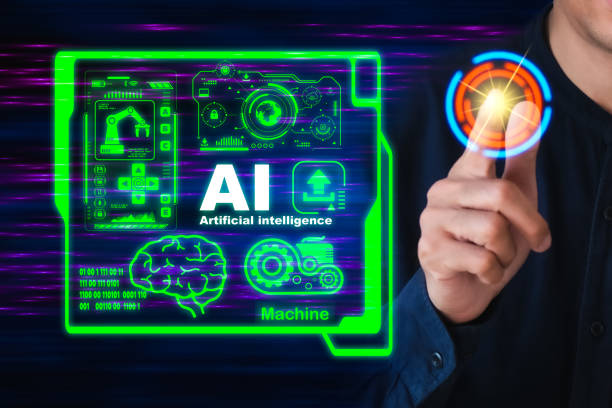
Alongside numerous advantages, the use of AI robots also has disadvantages and limitations that need to be considered.
Some of these disadvantages and limitations include:
- High Cost The cost of purchasing, installing, and maintaining robots can be high, especially for small and medium-sized businesses.
- Need for Expertise Programming, maintaining, and repairing robots require specialized technical knowledge that may not be readily available.
- Job Displacement The use of robots can lead to job displacement in some industries, particularly for repetitive and simple tasks.
- Ethical Issues The use of robots can raise ethical concerns related to privacy, discrimination, and accountability.
- Technical Limitations Robots still have technical limitations in some areas, such as understanding natural language, recognizing emotions, and solving complex problems.
By being aware of these disadvantages and limitations, better planning can be done for the use of AI robots, and potential problems can be prevented.
| Disadvantages | Description |
|---|---|
| High Cost | Cost of purchasing and maintaining robots |
| Need for Expertise | Programming and repairing robots require technical knowledge |
Are you tired of your company’s website not being seen as it deserves, losing potential customers? Solve this problem permanently with professional and effective website design by Rasaweb!
✅ Increase brand credibility and gain customer trust
✅ Attract targeted sales leads
⚡ Contact us now for a free consultation!
How to Choose an AI Robot?
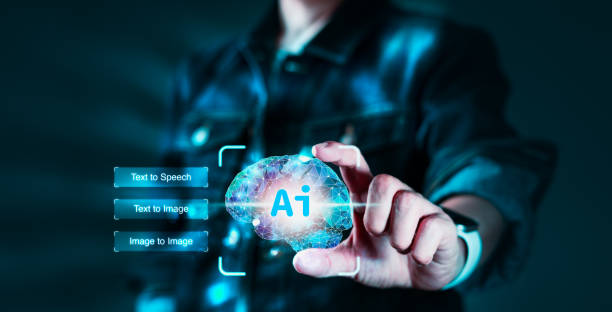
Choosing the right AI robot requires careful consideration of your needs, budget, and goals.
Here are a few tips to help you in this process:
- Determine Needs First and foremost, you must clearly define your needs.
What tasks do you want the robot to perform? In what environment do you intend to use the robot? What are your budget constraints? - Research and Investigate Research different types of robots, manufacturers, and vendors.
Read user reviews and consult with experts. - Review Technical Specifications Check the robot’s technical specifications, such as speed, accuracy, payload capacity, type of sensors, and AI algorithms.
- Test and Evaluate Before purchasing, test and evaluate the robot.
Ensure that the robot functions correctly and meets your requirements. - After-Sales Services Ensure that the vendor provides adequate after-sales services, such as training, maintenance, and repair.
By following these tips, you can choose a suitable AI robot that helps you achieve your goals.
Remember that an AI robot is a powerful tool that, if selected and used correctly, can bring many benefits.
Conclusion: AI Robots, Opportunities and Challenges
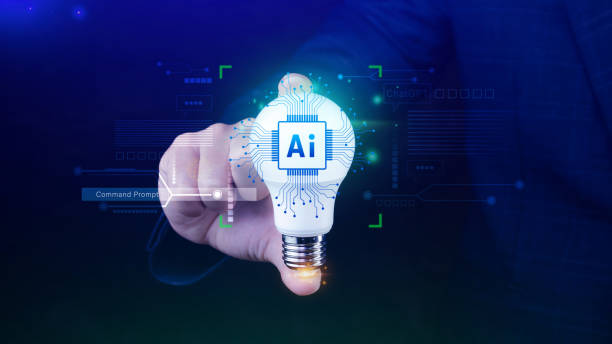
In this article, we comprehensively examined AI robots, their main components, types, algorithms, challenges, future, advantages, disadvantages, and how to choose one.
An AI robot is a combination of robotics and artificial intelligence, possessing great potential to improve human lives and various industries.
#AI_robots can perform repetitive and dangerous tasks, improve the quality of products and services, increase productivity, and provide better services to customers.
However, the use of AI robots also comes with challenges, such as high cost, the need for expertise, job displacement, and ethical issues.
For successful use of AI robots, these challenges must be seriously considered, and appropriate planning must be undertaken.
AI robots are evolving and will play a more significant role in our lives in the future.
Proper and responsible use of AI robots can contribute to the advancement of societies and improve the quality of human life.
AI robots are for performing more complex and flexible tasks than traditional robots. AI robots are capable of performing more complex and flexible tasks than traditional robots.
AI robots learn from data. AI robots interact with their environment. AI robots make decisions based on received information.
AI robots play a more significant role in human lives.
AI robots used the potential of robots to improve human lives AI robots.
AI robots help advance societies and improve the quality of human life AI robots.
Frequently Asked Questions
| Question | Answer |
|---|---|
| What is an AI robot? | It is a robot that uses AI capabilities for environmental perception, reasoning, learning, and decision-making to perform complex tasks autonomously. |
| What is the main difference between a regular robot and an AI robot? | AI robots can learn and adapt to their environment, while regular robots usually operate based on fixed and pre-programmed instructions. |
| In what fields are AI robots used? | In fields such as industry (production lines), medicine (robotic surgeries), services (customer support, smart vacuum cleaners), exploration (space and underwater), and entertainment. |
| How do AI robots learn? | They acquire new skills through machine learning and deep learning algorithms, by analyzing large data and identifying patterns. |
| Can AI robots have emotions? | Currently, no. They can recognize or simulate emotions, but they do not experience actual emotions like humans. |
| What are the most important advantages of using AI robots? | Increased productivity, reduction of human error, performance of dangerous or repetitive tasks, and provision of innovative and efficient services. |
| What challenges exist in the development of AI robots? | The need for abundant and high-quality data, algorithmic complexity, ethical issues, cybersecurity, and high research and development costs. |
| Are AI robots dangerous to humans? | With adherence to safe design principles and ethical regulations, no. Concerns are mostly related to social and economic impacts, such as changes in the job market. |
| What is an example of an AI robot in daily life? | Smart vacuum cleaner robots (like Roomba) that automatically map and clean homes, or smart voice assistants (like Siri and Alexa). |
| How is the future of AI robots predicted? | They are expected to become smarter, more autonomous, and capable of more complex interactions with humans, playing a more prominent role in industry, medicine, transportation, and daily life. |
And other services of Rasaweb Advertising Agency in the field of advertising
- Smart Content Strategy: Revolutionize SEO ranking improvement with intelligent data analysis.
- Smart Sales Automation: A professional solution for increasing click-through rates, focusing on the use of real data.
- Smart Advertising Campaign: Transform customer acquisition with the help of key page optimization.
- Smart Advertorial: A creative platform for improving online growth with intelligent data analysis.
- Smart Advertorial: Professional optimization for campaign management using attractive UI design.
And over hundreds of other services in internet advertising, advertising consulting, and organizational solutions.
Internet Advertising | Advertising Strategy | Advertorial
Sources
AI Robots Guide
Practical Applications of AI
Robotics and Artificial Intelligence
About Smart Robots
🚀 With Rasaweb Afarin, your business will soar in the digital world! From SEO and targeted content creation to multilingual website design and advertising campaign management, we are with you every step of your digital growth journey to ensure a powerful and lasting presence.
📍 Tehran, Mirdamad Street, next to Bank Markazi, Southern Kazeroon Alley, Ramin Alley, No. 6

